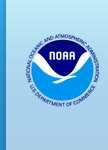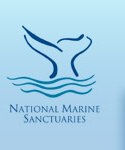Fish Spawning Aggregation Cruise

Many commercially and ecologically important species of reef fish come together for reproduction in groups known as spawning aggregations. Understanding the location and timing of fish aggregations, and the habitats that support them, is important for ensuring they are adequately protected.
On expeditions to study fish spawning aggregations, scientists use fishery acoustic sonar to identify groups of fish. They simultaneously use multibeam sonar to provide high resolution maps of the seafloor that enable scientists to study benthic habitats. Together, this information enables them to study the characteristics that different spawning sites have in common. Once fish aggregations are spotted on the sonar, divers conduct visual surveys to validate the sonar and determine the species. In areas where these aggregations occur below safe diving depths, cameras mounted on remotely operated vehicles are used to document fish aggregations.
Tagging and tracking fish is another method used to study how fish move through different parts of the sanctuary for spawning events. For example, many fish migrate from the shallow reefs to deeper waters when it comes time to spawn. Information gathered on these research expeditions helps scientists better understand fish spawning aggregations and allows management to ensure adequate protection of the habitats and sites most important to fish reproduction.
Read highlights and updates from past Fish Spawning Aggregation Cruises:
2014: Fish Spawning Aggregation Research Expedition
In September 2014, scientists from Florida Keys National Marine Sanctuary, the Florida Fish and Wildlife Research Institute, and partnering universities and organizations embarked on a fourteen-day research mission on the NOAA Ship Nancy Foster. On the first leg, they studied fish spawning aggregations in the regions around the Tortugas Ecological Reserve, while the second leg focused on an area south of the Marquesas.- 2014 Cruise Posted Updates
- 2014 Post-cruise Around the Sanctuary Story
2012: Fish Spawning Aggregation Research Expedition
In July 2012, scientists from Florida Keys National Marine Sanctuary, the Florida Fish and Wildlife Research Institute, and partnering universities and organizations embarked on a ten-day research mission on the NOAA Ship Nancy Foster to study fish spawning aggregations in the regions around the Dry Tortugas.- 2012 Pre-cruise Press Release
- 2012 Post-cruise Around the Sanctuary Story


